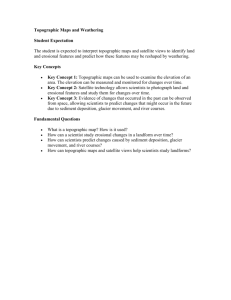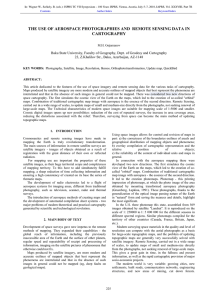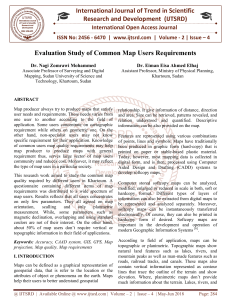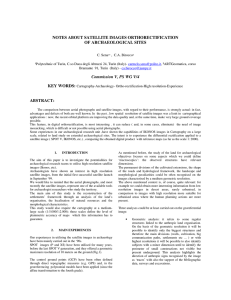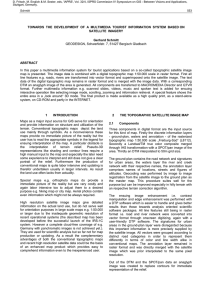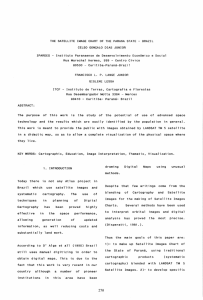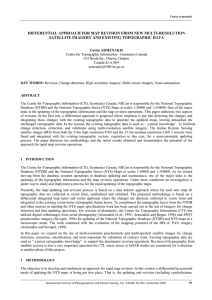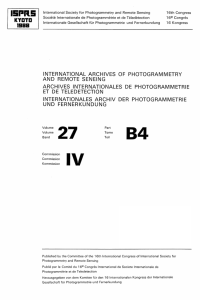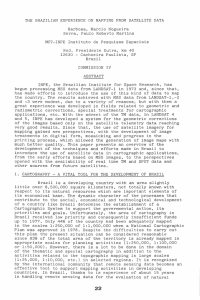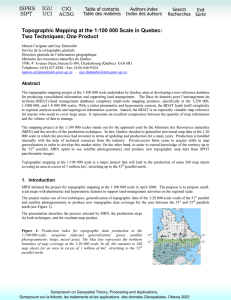Document 11821901
advertisement
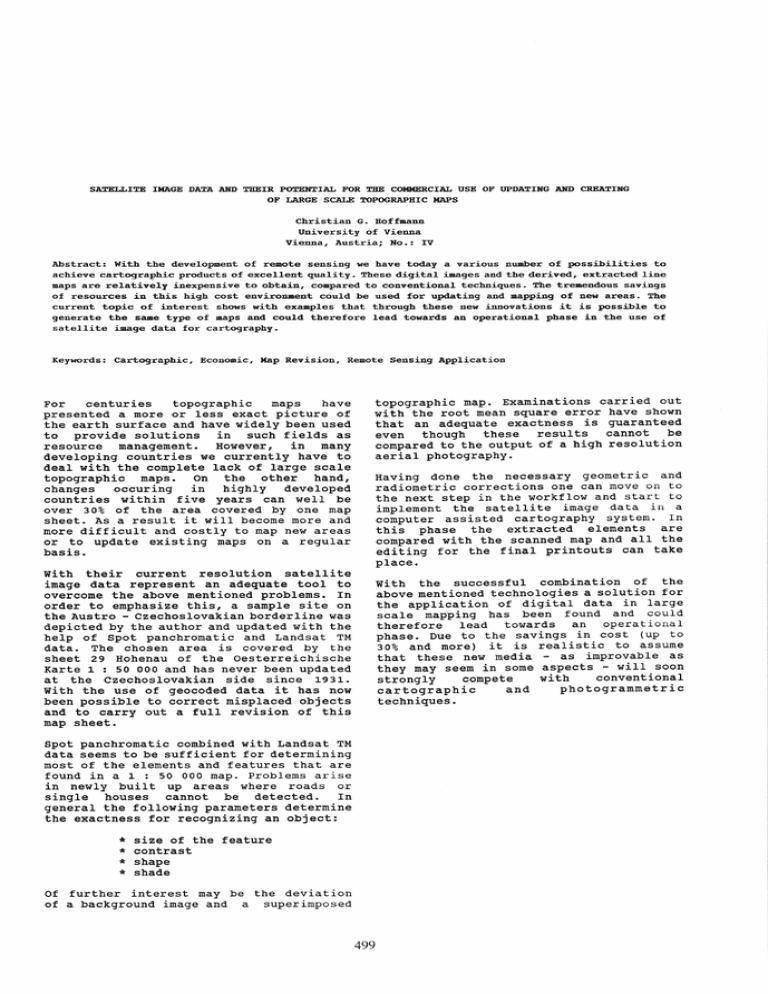
SATELLITE IMAGE DATA AND THEIR POTENTIAL FOR THE COMMERCIAL USE OF UPDATING AND CREATING OF LARGE SCALE TOPOGRAPHIC MAPS Christian G. Hoffmann University of Vienna Vienna, Austria; No.: IV Abstract: With the development of remote sensing we have today a various number of possibilities to achieve cartographic products of excellent quality. These digital images and the derived, extracted line maps are relatively inexpensive to obtain, compared to conventional techniques. The tremendous savings of resources in this high cost environment could be used for updating and mapping of new areas. The current topic of interest shows with examples that through these new innovations it is possible to generate the same type of maps and could therefore lead towards an operational phase in the use of satellite image data for cartography. Keywords: cartographic, Economic, Map Revision, Remote Sensing Application For centuries topographic maps have presented a more or less exact picture of the earth surface and have widely been used to provide solutions in such fields as resource management. However, in many developing countries we currently have to deal with the complete lack of large scale topographic maps. On the other hand, changes occuring in highly developed countries within five years can well be over 30% of the area covered by one map sheet. As a result it will become more and more difficult and costly to map new areas or to update existing maps on a regular basis. topographic map. Examinations carried out with the root mean square error have shown that an adequate exactness is guaranteed even though these results cannot be compared to the output of a high resolution aerial photography. Having done the necessary geometric and radiometric corrections one can move on to the next step in the workflow and start to implement the satellite image data in a computer assisted cartography system. In this phase the extracted elements are compared with the scanned map and all the editing for the final printouts can take place. with their current resolution satellite image data represent an adequate tool to overcome the above mentioned problems. In order to emphasize this, a sample site on the Austro - Czechoslovakian borderline was depicted by the author and updated with the help of spot panchromatic and Landsat TM data. The chosen area is covered by the sheet 29 Hohenau of the Oesterreichische Karte1: 50 000 and has never been updated at the Czechoslovakian side since 1931with the use of geocoded data it has now been possible to correct misplaced objects and to carry out a full revision of this map sheet. with the successful combination of the above mentioned technologies a solution for the application of digital data in large scale mapping has been found and could therefore lead towards an operational phase. Due to the savings in cost (up to 30% and more) it is realistic to assume that these new media - as improvable as they may seem in some aspects - will soon strongly compete with conventional cartographic and photogrammetric techniques. spot panchromatic combined with Landsat TM data seems to be sufficient for determining most of the elements and features that are found in a 1 : 50 000 map. Problems arise in newly built up areas where roads or single houses cannot be detected. In general the following parameters determine the exactness for recognizing an object: * * * * size of the feature contrast shape shade Of further interest may be the deviation of a background image and a superimposed 499
